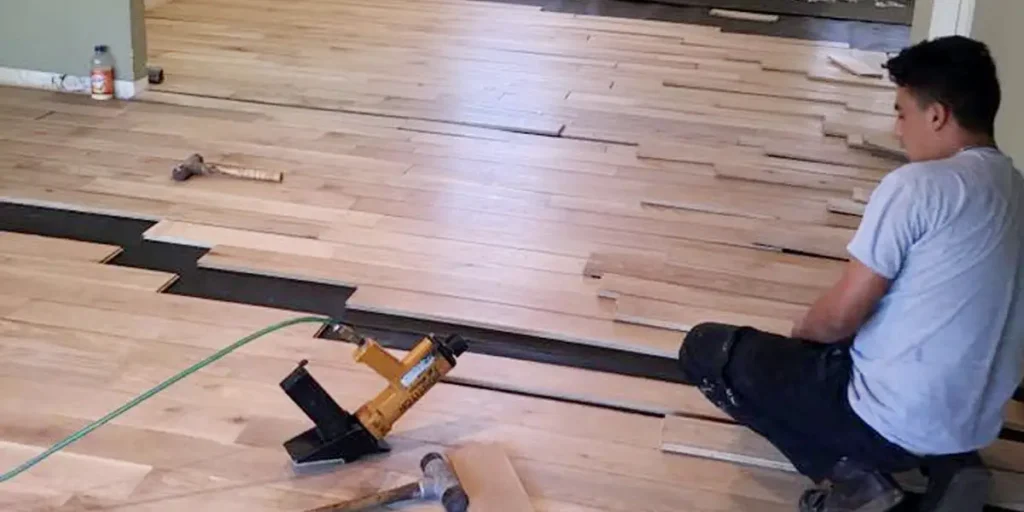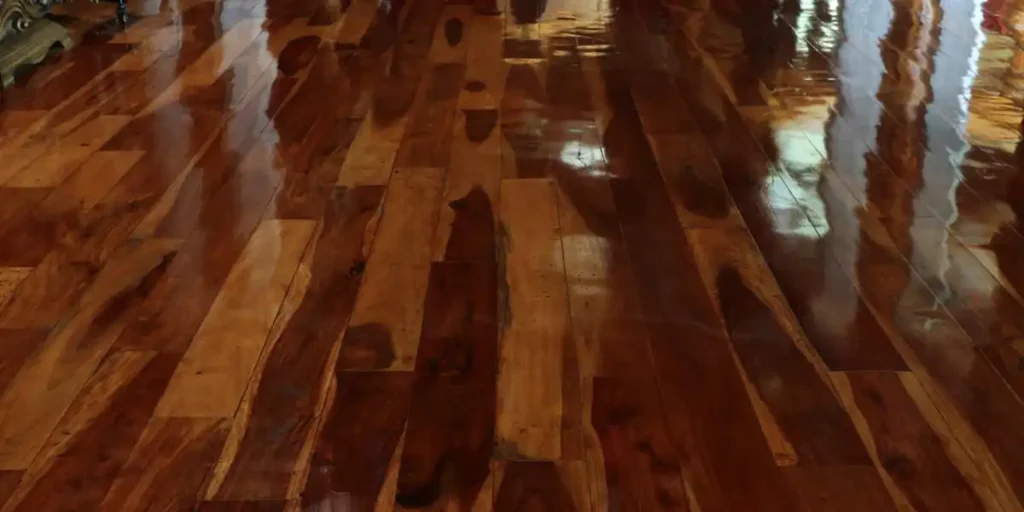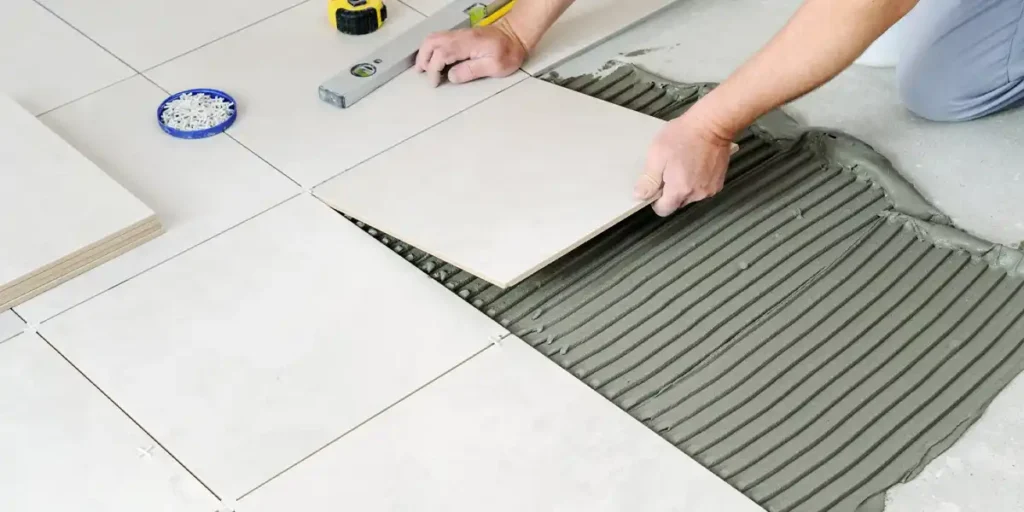Picture this: your stylish armchair has drifted several inches from its intended spot, or your dining chairs are always in disarray after one meal. It’s not just inconvenient, it risks damaging your beautiful hardwood floors and even causing accidents.
The good news? There are reliable solutions to keep your furniture in place.
This guide explores practical methods to stop furniture from sliding on hardwood floors, helping you maintain a secure and visually appealing space.
Why Does Furniture Slide on Hardwood Floors?
Sliding furniture is primarily caused by the smooth surface of hardwood floors, which offers minimal friction against furniture legs. Factors contributing to the problem include:
- Lightweight Furniture: Lighter pieces are more prone to shifting.
- Small or Smooth Furniture Feet: Narrow or slick bases provide less grip.
- Daily Use: Movement from sitting, leaning, or rearranging furniture exacerbates the issue.
- Humidity Levels: Fluctuating humidity can affect the slipperiness of hardwood floors.
Understanding the cause helps in selecting the most effective solution for your needs.
Effective Solutions to Stop Furniture From Sliding on Hardwood Floors
1. Use Rubber Grippers for Maximum Traction
Rubber grippers are among the best solutions for heavy furniture. These pads stick to the bottom of furniture legs, creating a strong grip on the floor without damaging the surface. Look for grippers specifically designed for hardwood floors to ensure compatibility.
2. Apply Felt Pads for Gentle Protection
Felt pads are easy to attach and provide a soft barrier between furniture legs and the floor. While excellent at preventing scratches, they may not provide enough friction for heavier or frequently moved pieces.
3. Invest in Furniture Grippers for Versatile Use
Furniture grippers combine the benefits of felt pads and rubber backing, making them ideal for both heavy and lightweight furniture. They are discreet and effective, making them a popular choice for many homeowners.
4. Place Rug Pads Under Furniture
A high-quality rug pad can prevent sliding furniture while adding a layer of cushioning to your space. These pads are particularly effective for pieces sitting on area rugs, preventing both the rug and furniture from shifting.
5. Use Non-Slip Shelf Liners for a DIY Fix
Non-slip shelf liners can be cut to size and placed under furniture legs for an inexpensive yet effective solution. They’re perfect for temporary setups or lighter furniture.
6. Secure Sliding Drawers and Cabinets
Sliding isn’t limited to freestanding furniture—drawers and cabinets can also pose a problem. Install drawer stops or cabinet locks to prevent damage to floors and ensure the safety of your items.
DIY Solutions: Creative and Cost-Effective Options to Prevent Furniture from Sliding
Preventing furniture from sliding on hardwood floors doesn’t have to break the bank. With a bit of creativity and readily available materials, you can implement DIY solutions that are both budget-friendly and effective. Here’s a closer look at these options, with tips for maximizing their benefits.
1. Rubber Bands: A Quick and Flexible Fix
Rubber bands are a surprisingly effective way to stop furniture from sliding. Simply wrap one or two thick rubber bands tightly around the bottom of each furniture leg. The rubber adds a layer of friction between the furniture and the floor, reducing the chances of slipping. This solution is particularly useful for lightweight furniture like dining chairs or side tables. Rubber bands are also easy to adjust or replace, making this a perfect quick fix for temporary setups or rented spaces.
2. Cork Pieces: Eco-Friendly and Gentle on Floors
If you’re aiming for a sustainable option, cork is a great choice. Cut small pieces of cork from an old corkboard or wine corks and attach them to the bottom of furniture legs using adhesive or double-sided tape. Cork is naturally non-slip and soft, which helps grip the floor while protecting it from scratches.
3. Hot Glue Dots: Customizable Friction on a Budget
Hot glue isn’t just for crafting; it can be a clever way to add grip to your furniture. Apply small dots of hot glue evenly to the bottom of each furniture leg. Once the glue dries, it forms a rubbery texture that provides friction and helps keep furniture in place. This method is ideal for heavier pieces that don’t require frequent movement.
4. Adhesive Strips: A Versatile and Practical Option
Double-sided adhesive strips or non-slip tape can offer an instant solution to sliding furniture. Simply cut the strips to size and stick them to the bottom of furniture legs. These strips provide a strong grip on hardwood floors and are easy to remove or replace when needed.
Factors to Consider When Choosing a Solution
The right solution depends on your specific furniture and flooring setup. Consider these factors:
- Furniture Weight: Heavier furniture requires stronger grip solutions, such as rubber grippers.
- Floor Type: Ensure your chosen solution is safe for hardwood and won’t damage the finish.
- Foot Size and Shape: Larger furniture legs benefit from broader gripping pads, while smaller feet may need more focused solutions.
- Aesthetic Preferences: Some options are more discreet than others, allowing you to maintain a sleek look.
Conclusion
Sliding furniture on hardwood floors doesn’t have to be a constant frustration. By implementing one or more of the solutions in this guide, you can protect your floors, secure your furniture, and create a safer, more comfortable living space.
Whether you choose simple felt pads or robust rubber grippers, these methods ensure your hardwood floors remain as beautiful and functional as ever.
Thinking of Reusing or Restoring Your Hardwood Floors? Let Cardenas Flooring help you transform your space with sustainable and professional solutions. Contact us to get started today!
Frequently Asked Questions (FAQs)
Will using rubber grippers damage my hardwood floors?
Rubber grippers are generally safe for hardwood floors, but it’s essential to choose products specifically designed for hardwood surfaces. Avoid cheap alternatives with adhesives that could leave sticky residues or discolor the floor. Regularly clean the bottom of the grippers and the floor beneath them to prevent dirt buildup, which could lead to scratches. If you’re concerned, test the gripper in an inconspicuous area first.
Are felt pads enough to stop heavy furniture from sliding?
Felt pads are ideal for preventing scratches and minor movement but may not provide enough grip for heavy furniture on smooth hardwood floors. To secure heavier items, consider combining felt pads with rubber grippers or rug pads. This dual-layer approach provides both protection and enhanced friction, ensuring the furniture stays in place.
Can I use area rugs to prevent furniture from sliding?
Yes, placing furniture on area rugs is an effective way to prevent sliding. For added security, use a non-slip rug pad underneath the rug. This not only keeps the rug in place but also prevents furniture from shifting. Ensure the rug pad is hardwood-friendly to avoid damage to your floors, such as discoloration or residue.
What’s the best solution for lightweight furniture?
For lightweight furniture, furniture grippers or felt pads are excellent options. They provide enough friction to keep the furniture in place without damaging the hardwood. For frequently moved items like dining chairs, adhesive grippers are particularly effective. Ensure they are cleaned regularly to maintain effectiveness and prevent dirt buildup.
How do I remove sticky residue left by furniture pads or grippers?
Use a gentle hardwood floor cleaner or a solution of warm water and mild dish soap to remove any sticky residue. Apply the solution with a soft cloth, and avoid abrasive scrubbers that might scratch the surface. If the residue is stubborn, try rubbing alcohol or a commercial adhesive remover designed for hardwood floors. Always test in a small area first.




